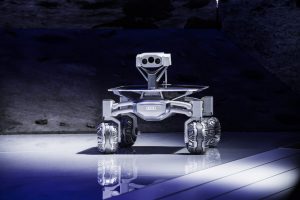 Doha, July 27, 2016: The PT Scientists are aiming high – they are shooting for the Moon. By the end of 2017, a group of 30 scientists and engineers wants to send an unmanned rover to the Moon as part of the Google Lunar X-Prize (GLXP) competition which was proclaimed in 2007. After eight years of development, and in its fifth generation, the rover named the “Audi Lunar Quattro,” after world class car manufacturer Audi, is almost ready for its incredible journey.
Doha, July 27, 2016: The PT Scientists are aiming high – they are shooting for the Moon. By the end of 2017, a group of 30 scientists and engineers wants to send an unmanned rover to the Moon as part of the Google Lunar X-Prize (GLXP) competition which was proclaimed in 2007. After eight years of development, and in its fifth generation, the rover named the “Audi Lunar Quattro,” after world class car manufacturer Audi, is almost ready for its incredible journey.So is the landing module, the Autonomous Landing and Navigation Module (ALINA), that is ready for its first historic flight on a private mission to the Moon. The autonomous vehicle has been put through numerous environmental stress tests to guarantee it can manage the 500 meter distance it must cover on the Moon’s surface. Testing is obviously taking place on Earth – but under the most challenging conditions.
So far the rover has completed environmental stress tests in the glaciers of the Austrian Alps, on the volcanic terrain of Crete, in the Australian Outback, as well as in the mountains of New Zealand. It has even completed tests in the laboratories of the American space agency, NASA. However, the rover’s biggest challenge is yet to come, and this one is a ripsnorter: the rover is going to the Bir Zekreet desert in Qatar, where it will have to demonstrate its ability to deal with the sand and dust of that terrain, similar to the dust found on the Moon, and prove whether its passive thermal management will work as expected.
Be part of this exciting experience!
We would like to invite readers to be part of this test drive on 29 and 30 July 2016: come and see the Audi Lunar Rover in action at Bir Zekreet before it heads to the Moon to fulfill its mission.
If readers have any questions, please let the PTScientists team know at [email protected]
SpaceWatch Middle East will be reporting on this event.
 SpaceWatch.Global An independent perspective on space
SpaceWatch.Global An independent perspective on space

